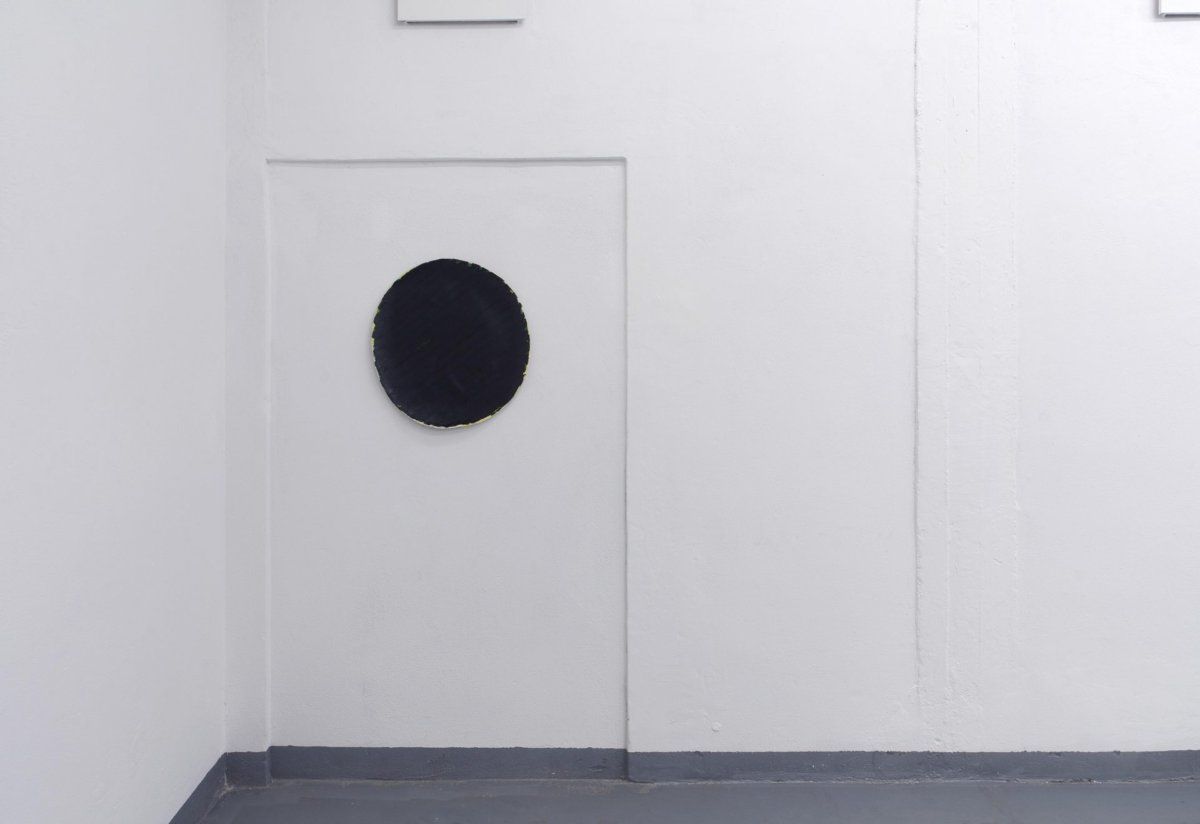
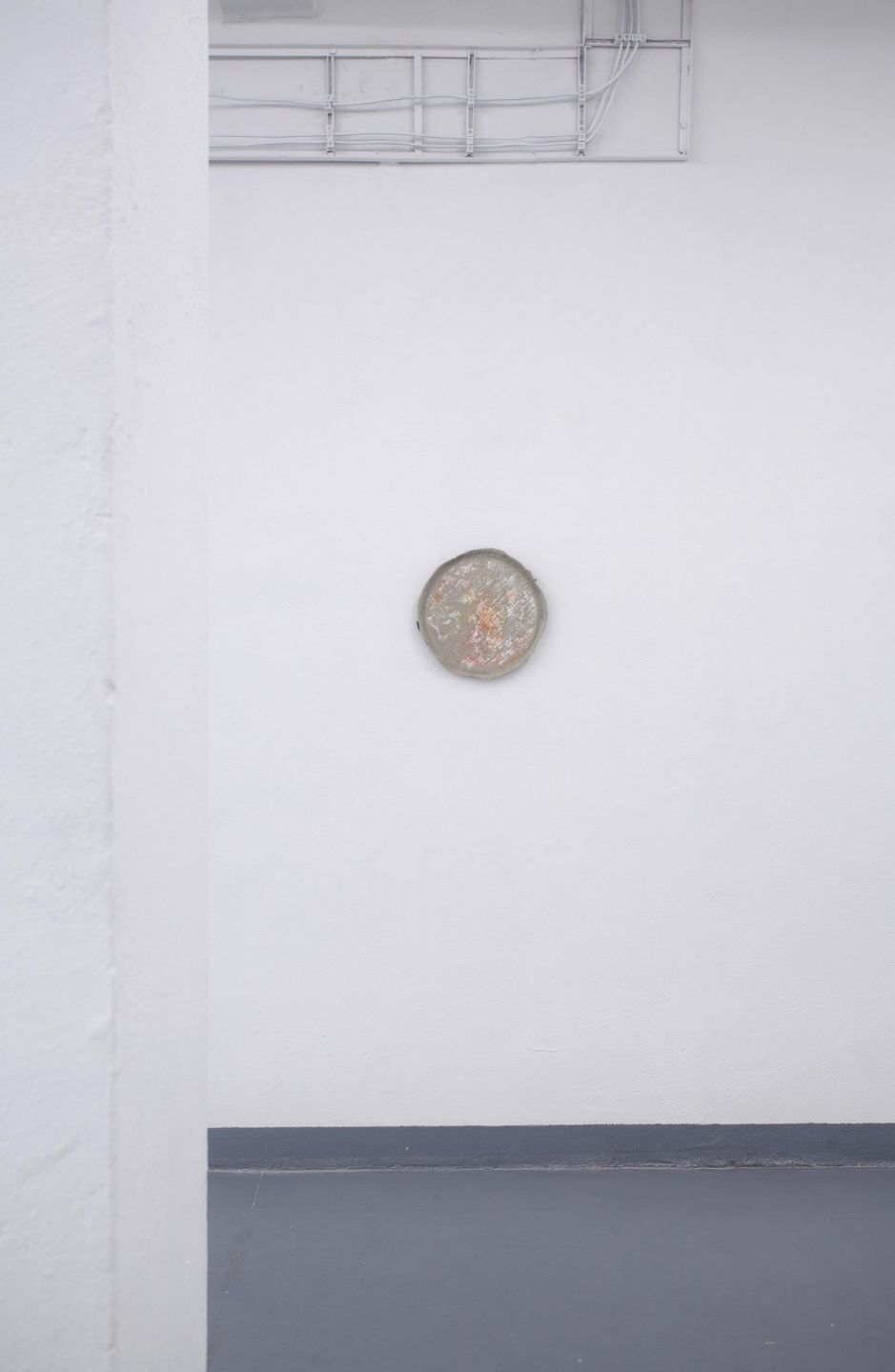
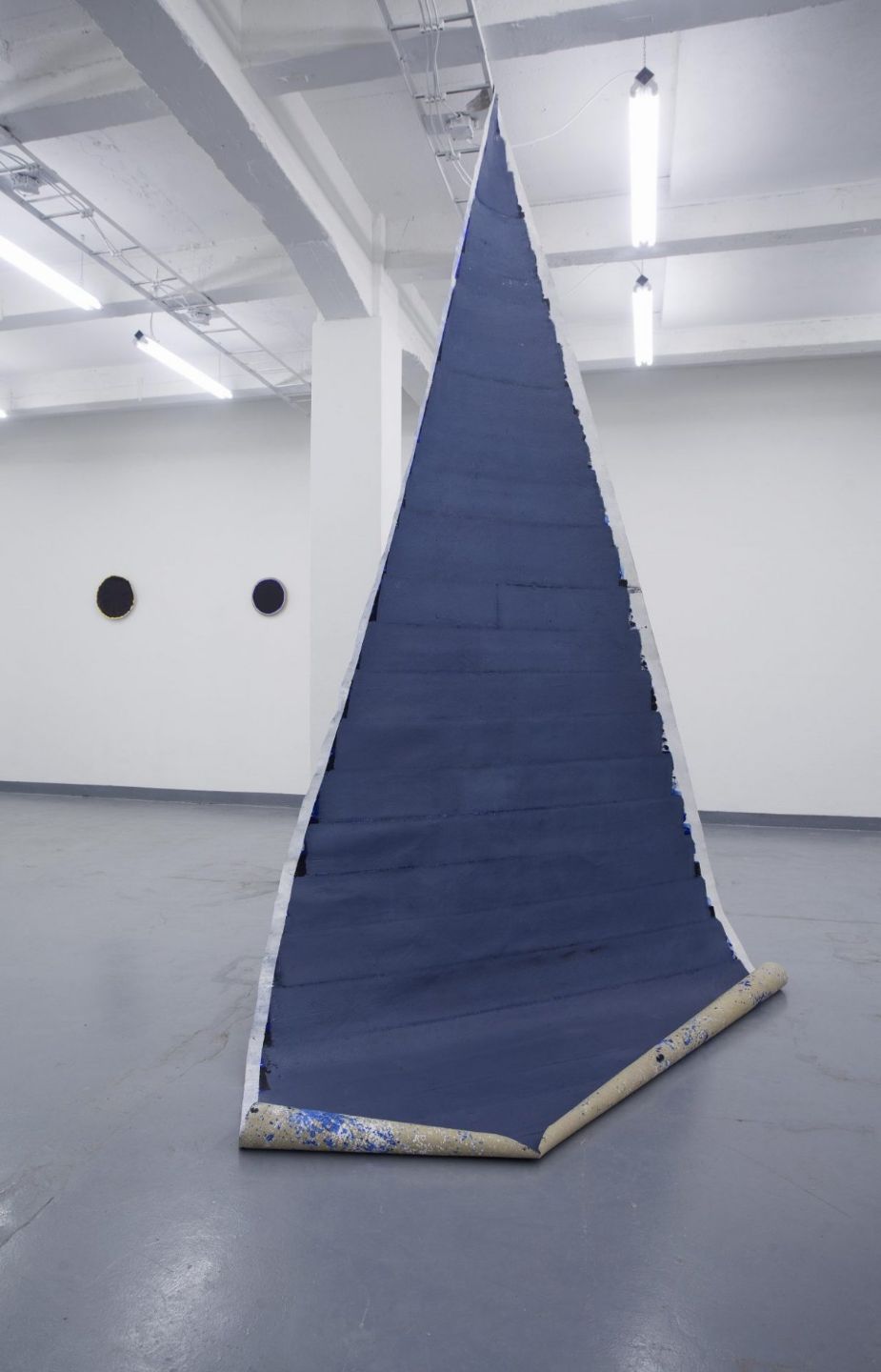
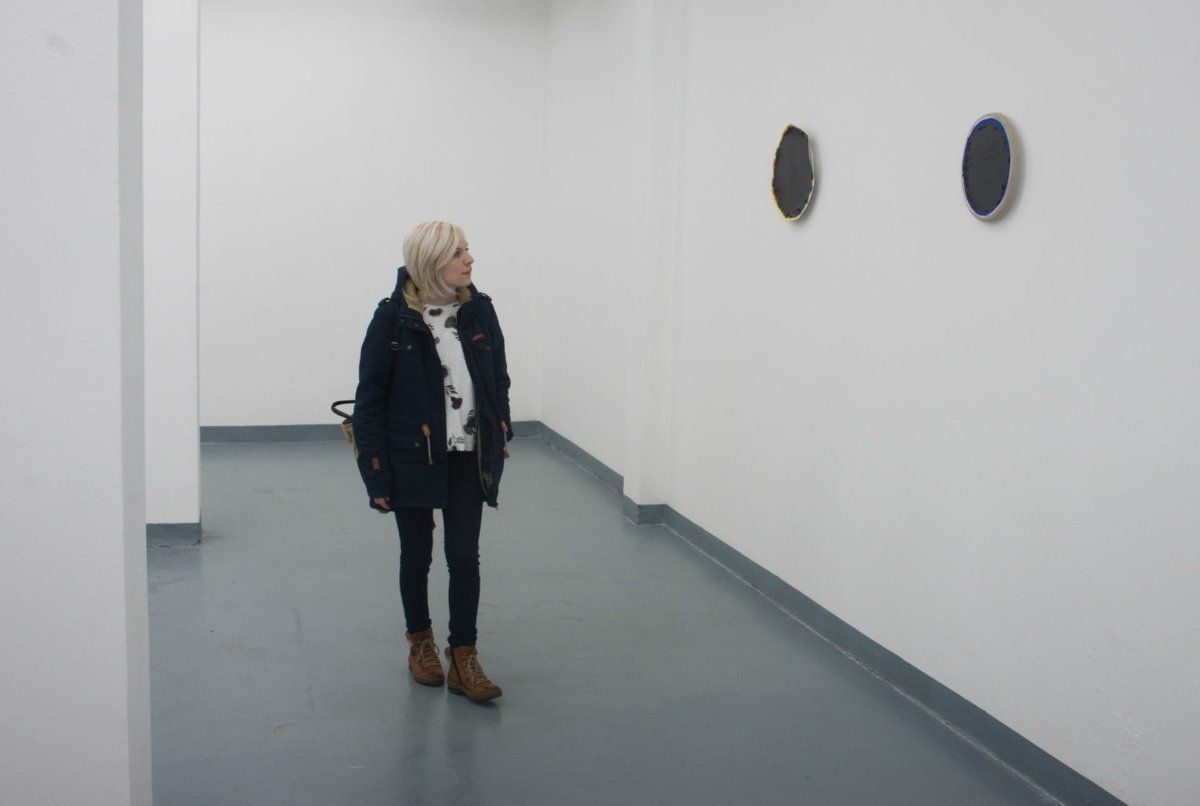
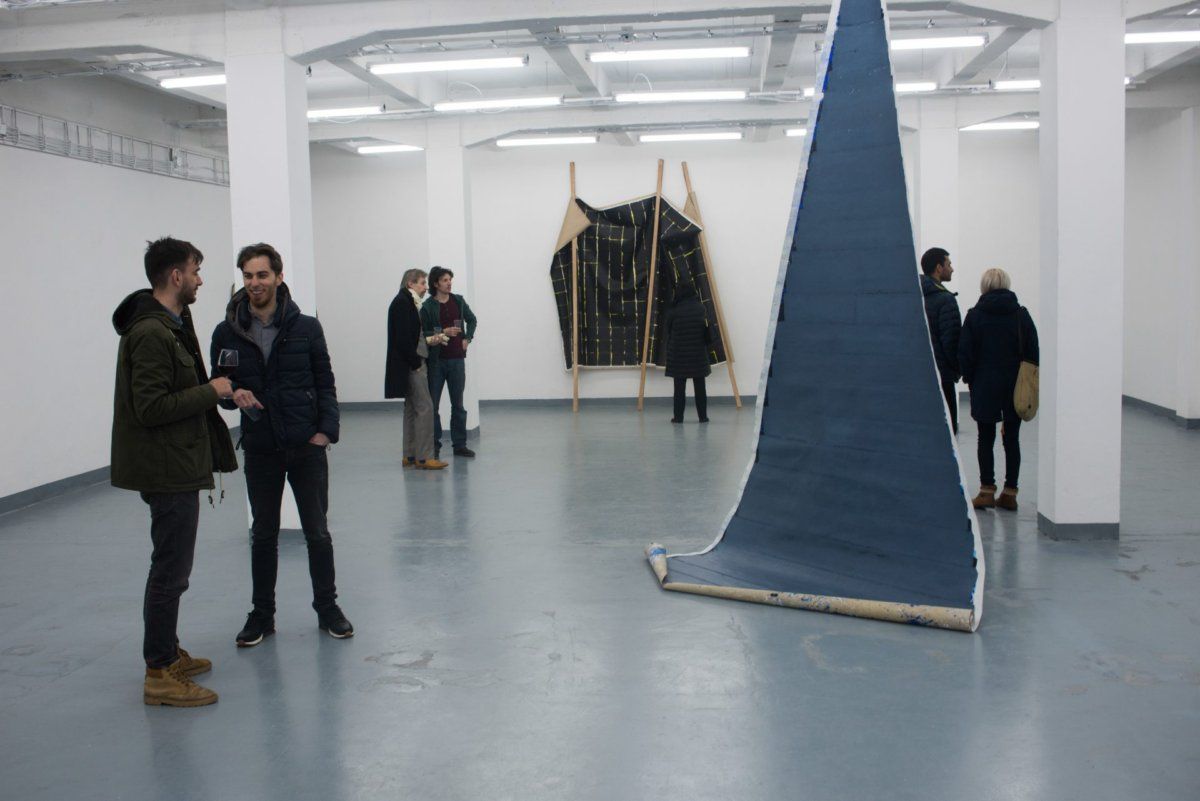


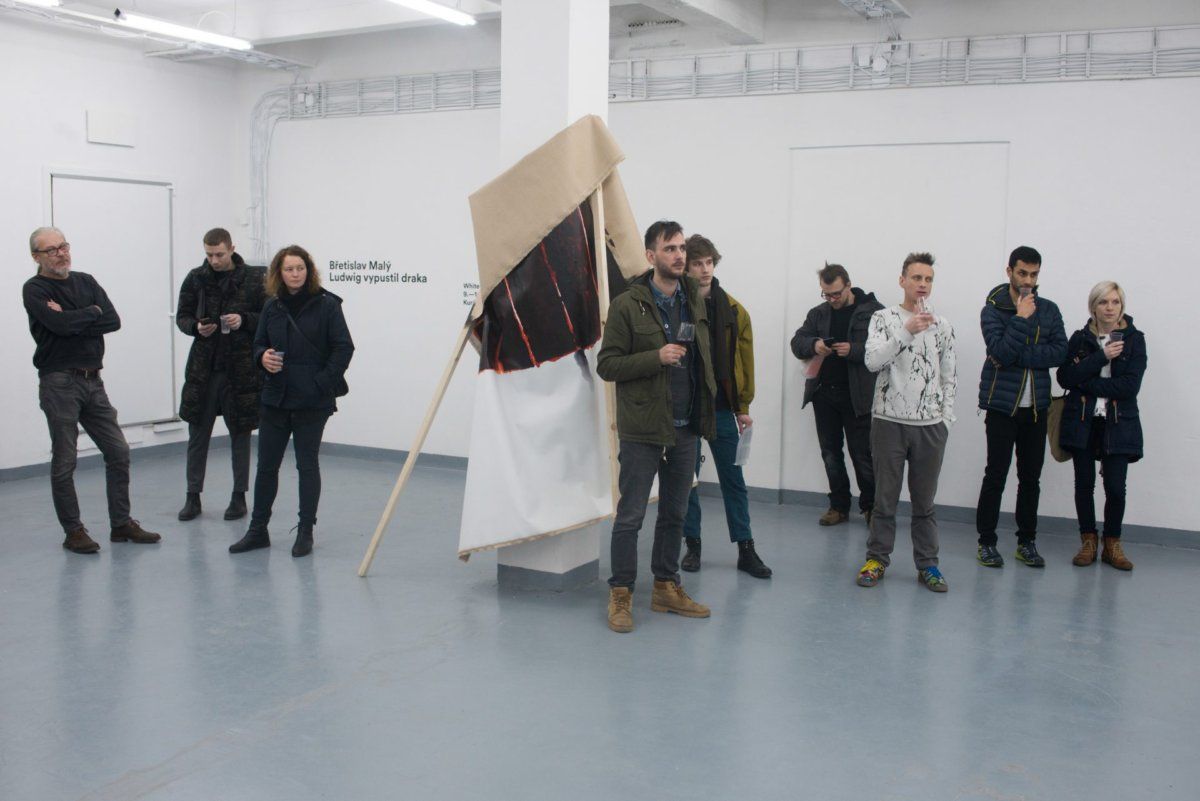
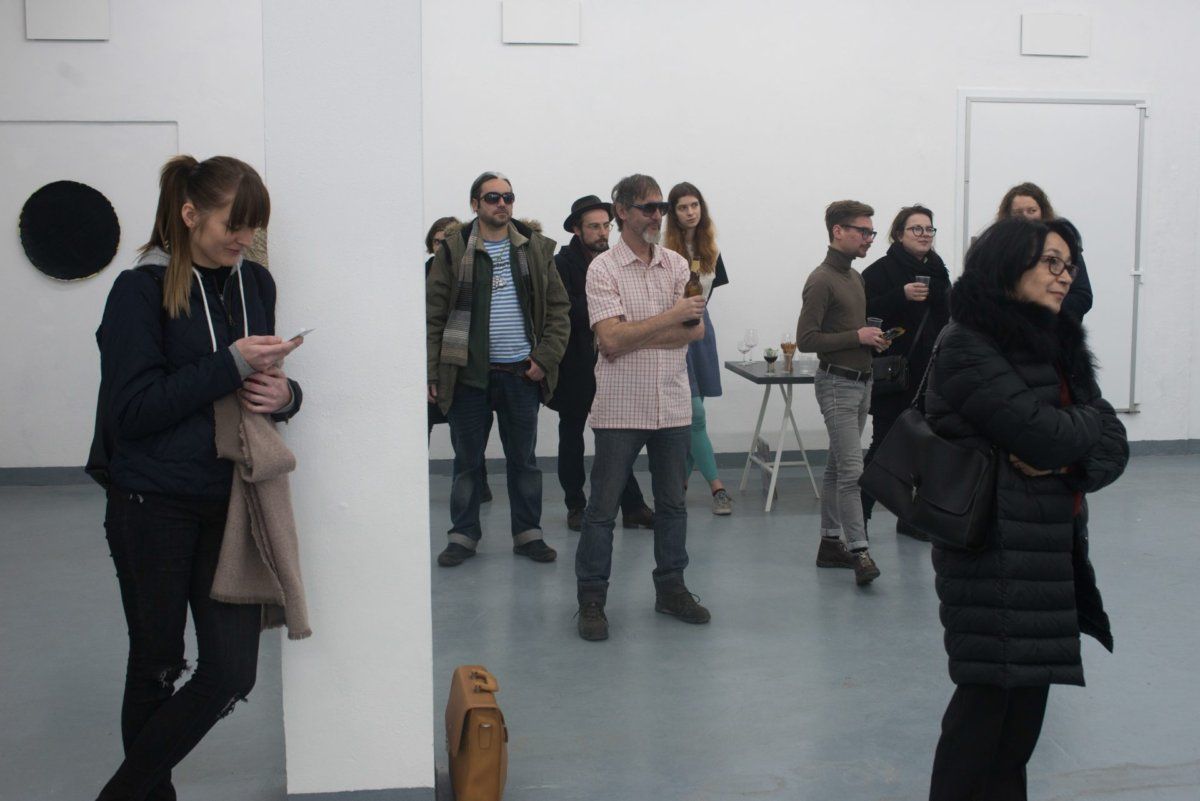
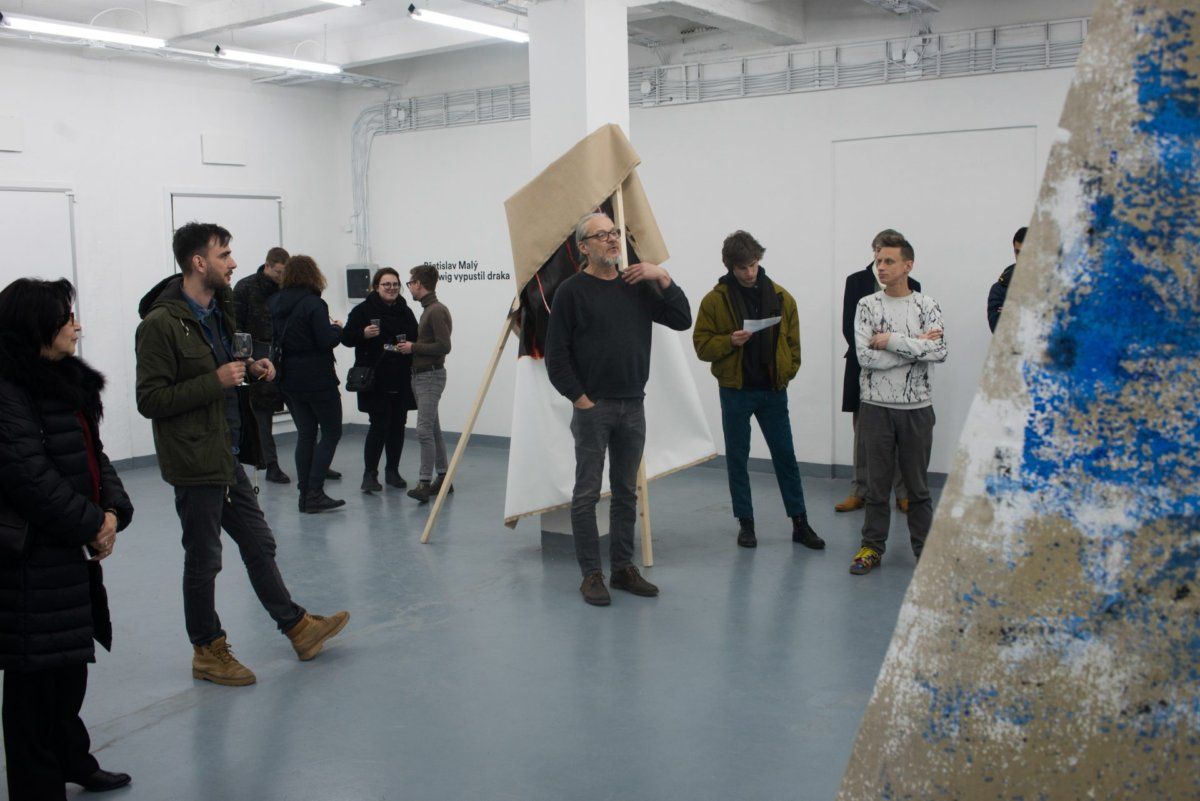
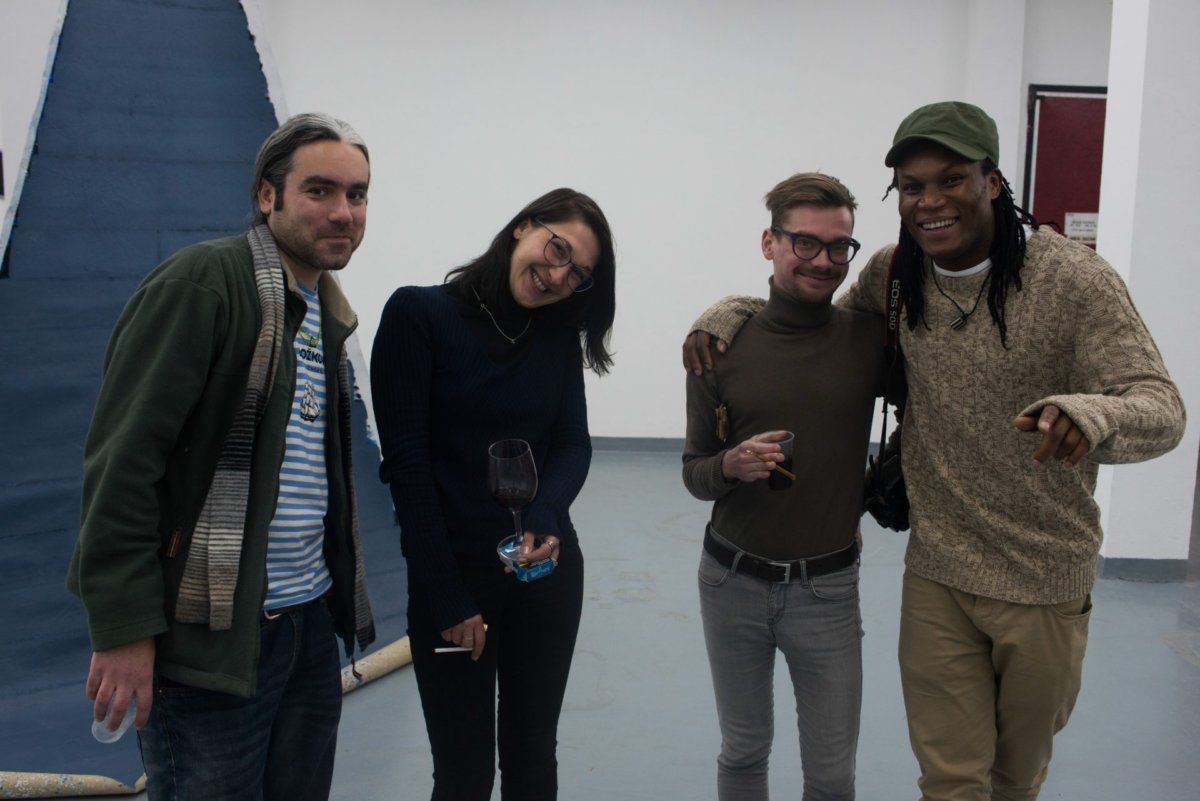
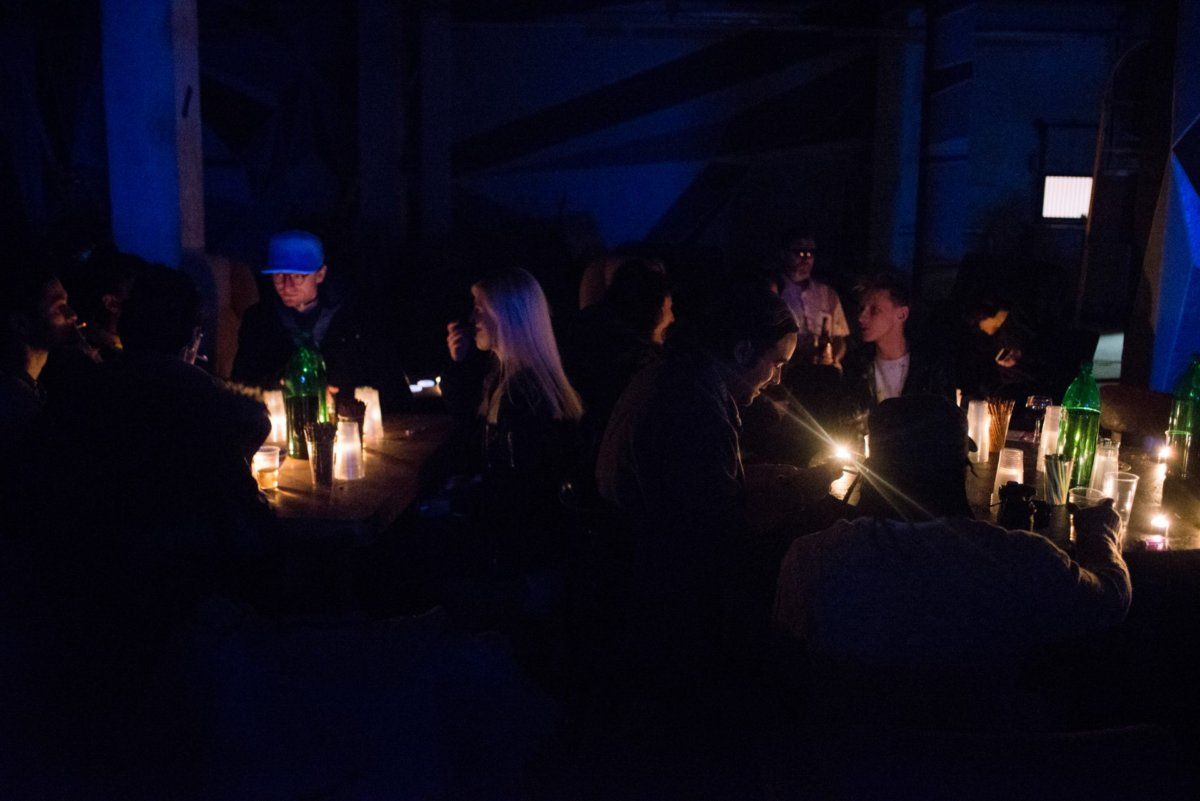
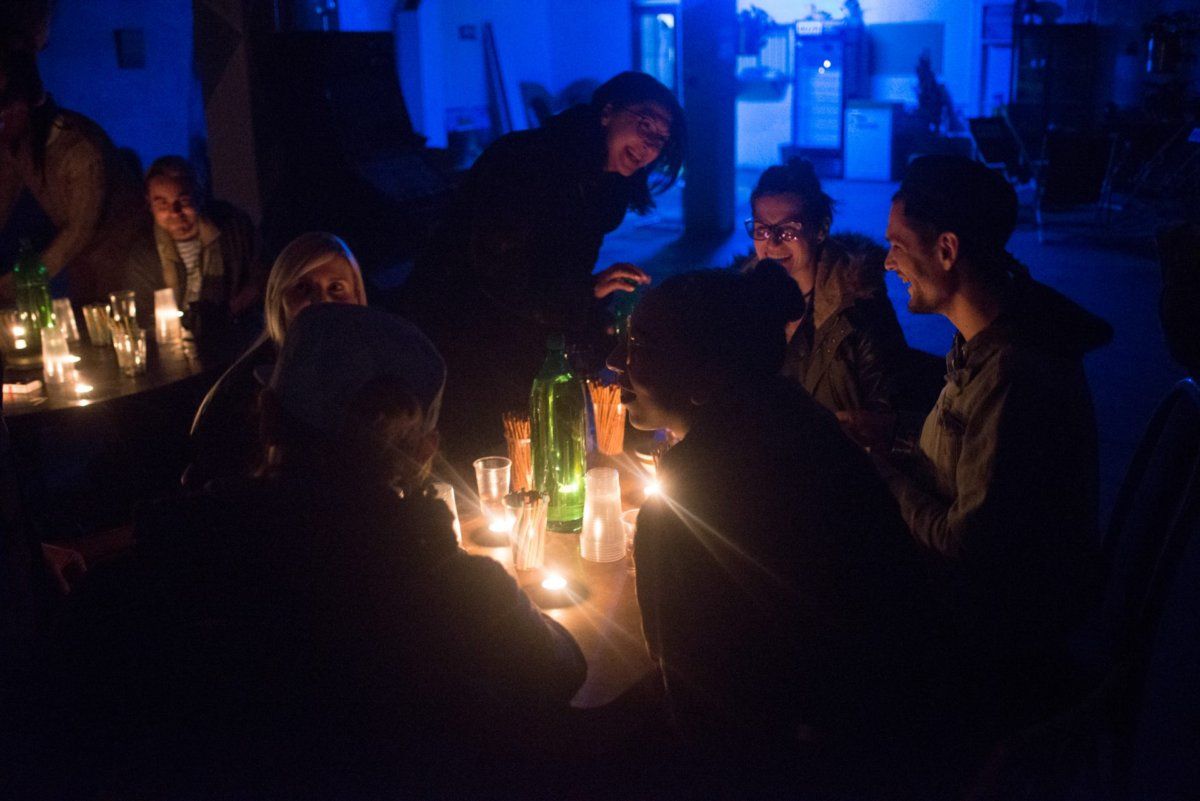

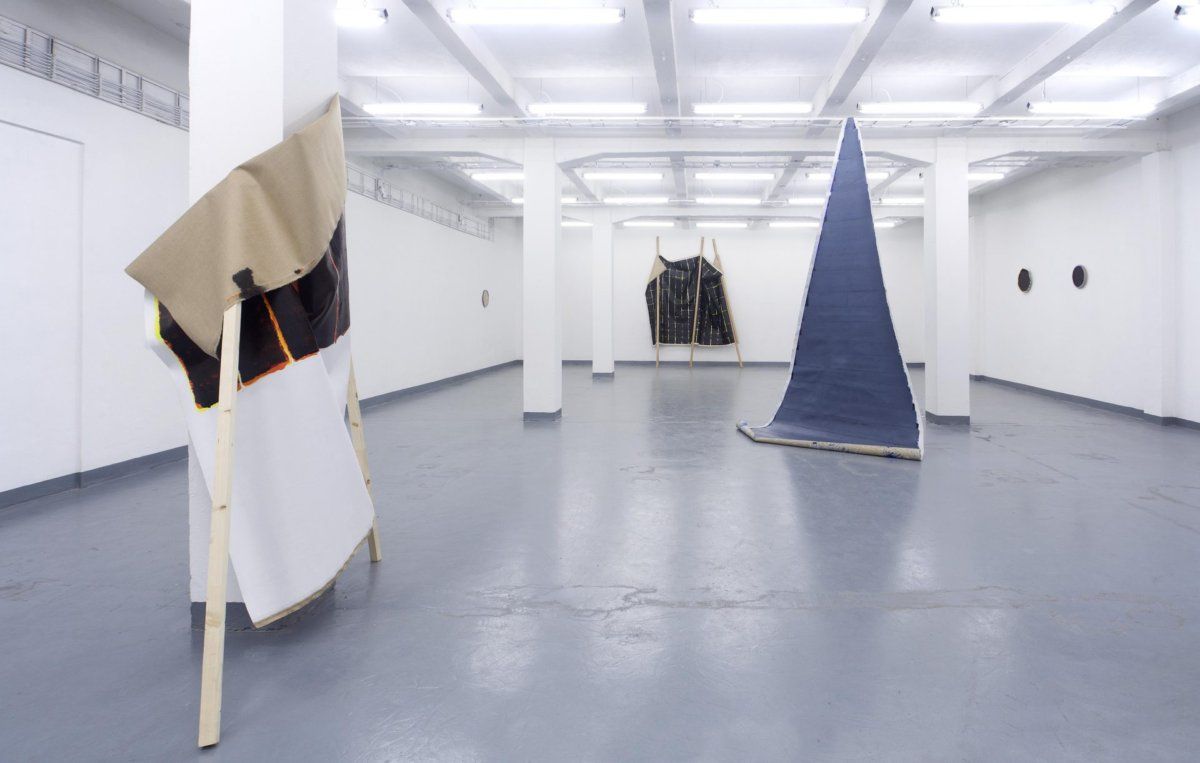
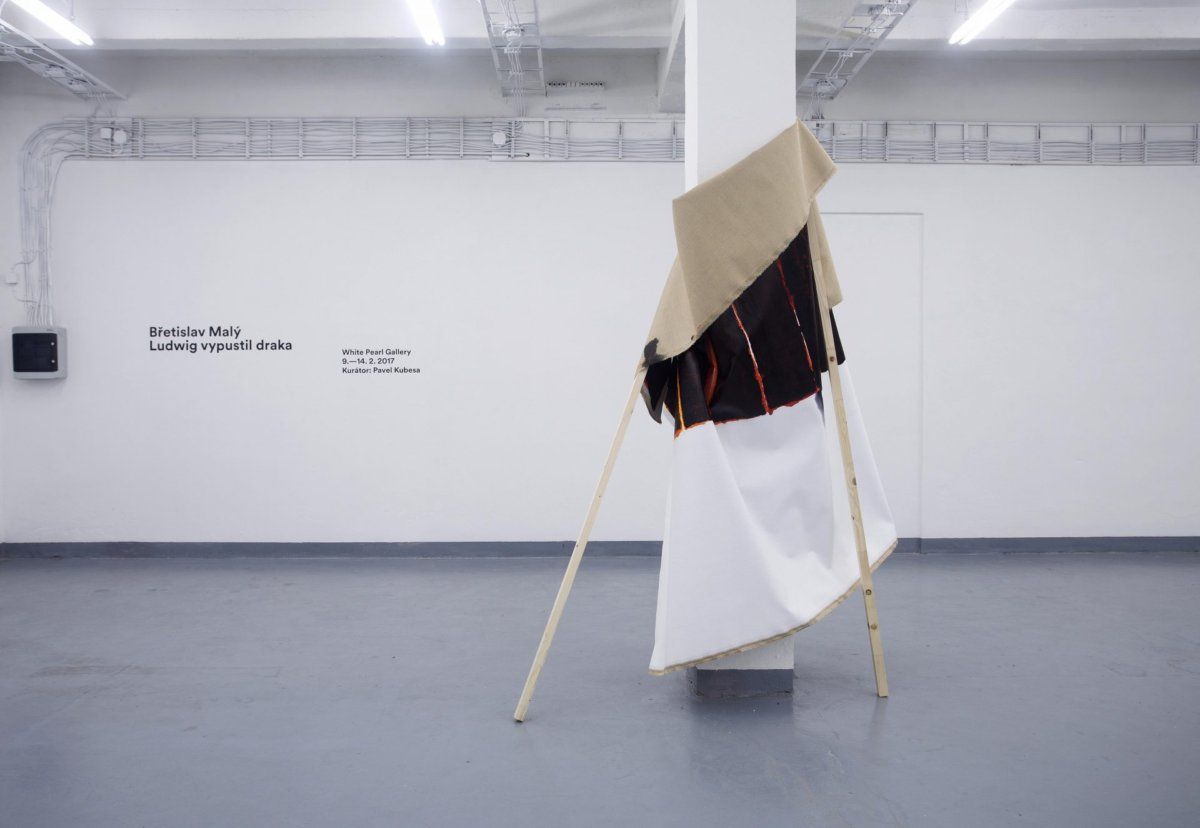
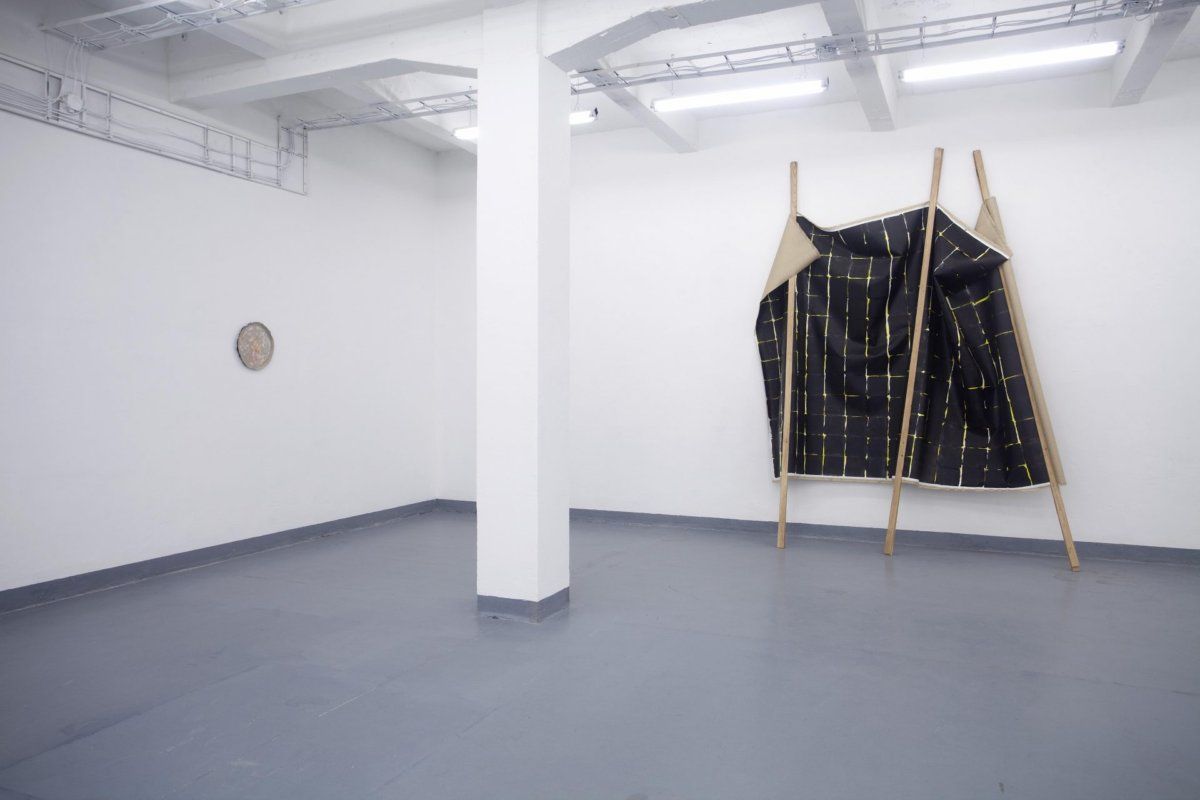
Břetislav Malý
Ludwig let out a kite
In his work, Břetislav Malý has been concerned for a long time with the questions that are most intrinsic to painting, the reflection of the nature and the structure of painting media, questions that he submits both to a strict, almost philosophical analysis and to a free and playful creative gloss. In his earlier paintings, he explored the capacity of painting media to depict optic effects, the properties of the impact of light and its refraction, more recently he has been developing one of the basic elements of painting: colour. Colour as the fundament of the painting media represented a bridge in his work from what is at first glance a purely abstract visual morphology in the direction of a more conceptually oriented understanding of Břetislav’s paintings in which notes and “stories” of the theory of colours of the “later” Wittgenstein are reflected. In the centre of Wittgenstein’s attention are not some kind of “colours in themselves”, but the role colours play in our discourse, how we speak about colours, what “language games” we usually play with them. The question of colours cannot be answered in the field of psychology or physiology, but falls within the sphere of the analysis of natural language, because what is crucial for the solution of this question are models and ways of how we grasp reality by means of language.
The exhibition in White Pearl Gallery starts this “language game” through the painting media. In the gallery space Břetislav Malý creates a complex painting situation that develops painting as a spatial medium. It is not about a conversion of painting into object, but about the painting itself, as the most original structural element of an “painting”, understood as an instrument for dealing with three-dimensional space. Space, understood either constitutively (as a building element of working with colour) or as a result (as a mimetic effect of the colour composition), then becomes a subject that enables the articulation of theses of self-reflection of (not only) Břetislav’s painting.